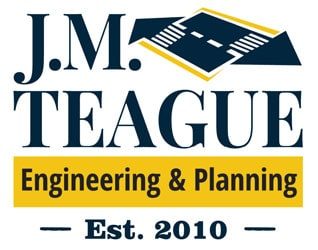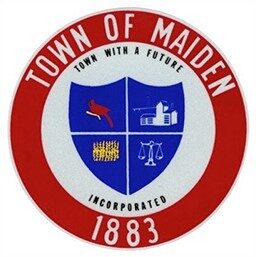J.M. Teague Engineering & Planning (JMTE) has enjoyed a longstanding professional association with the Town of Maiden, a thriving community located in both Catawba and Lincoln counties. Known as “The Biggest Little Football Town in the World,” Maiden has a rich heritage and a bright future, making it a pleasure to highlight its history and progress.
Maiden was incorporated on March 7, 1883, initially serving as a cotton mill site and trading center. The town’s name is believed to originate from “Maiden Creek,” possibly referring to the native “Maidencane” grass abundant in the area. This historic town has grown steadily over the years, balancing small-town charm with economic development. Today, it continues to be a welcoming and dynamic community.
Another notable aspect of Maiden’s history is its role in regional industry and development. While it began as an agricultural and textile hub, the town has successfully adapted to modern industry, now housing major technology and manufacturing operations, including a data center for one of the world’s leading technology companies. Maiden’s commitment to growth while preserving its unique character makes it a model of resilience and progress.
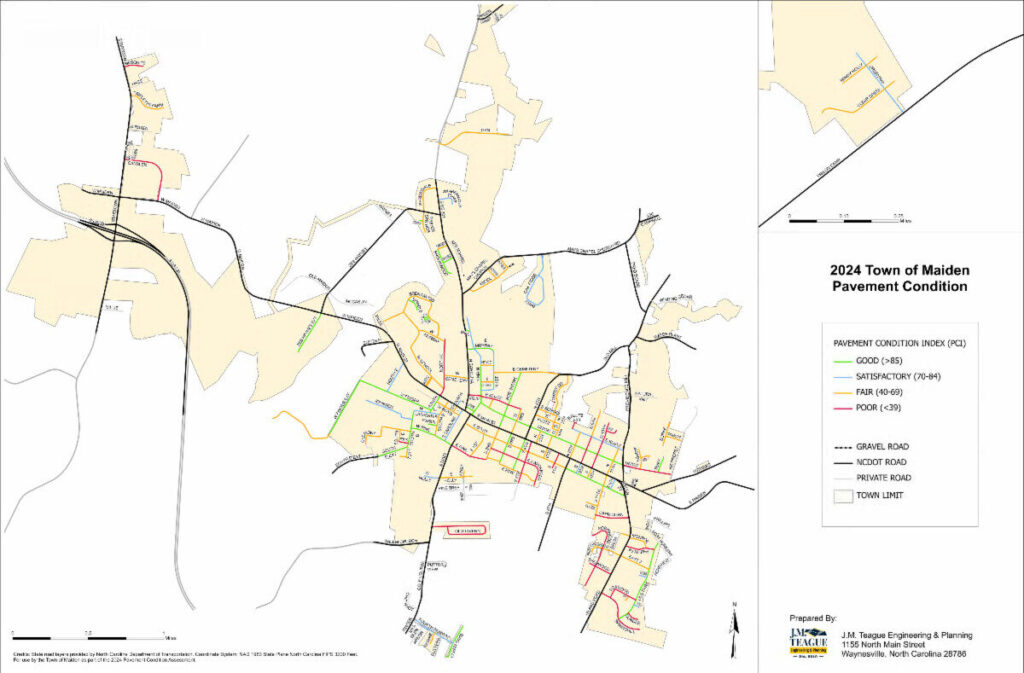
Providing consulting engineering and planning services in a community with such a strong identity requires a careful approach to both preservation and innovation. JMTE has been privileged to assist Maiden in various projects aimed at improving infrastructure and enhancing the town’s livability. Over the years, we have provided regulatory sign and pavement marking reviews, parking studies, curb and gutter condition assessments, traffic studies, roadway maintenance training, and general on-call traffic engineering services. Our most recent projects have included a comprehensive pavement condition survey with updates to their Powell Bill map. These projects help ensure that Maiden continues to thrive as a safe, accessible, and well-planned community.
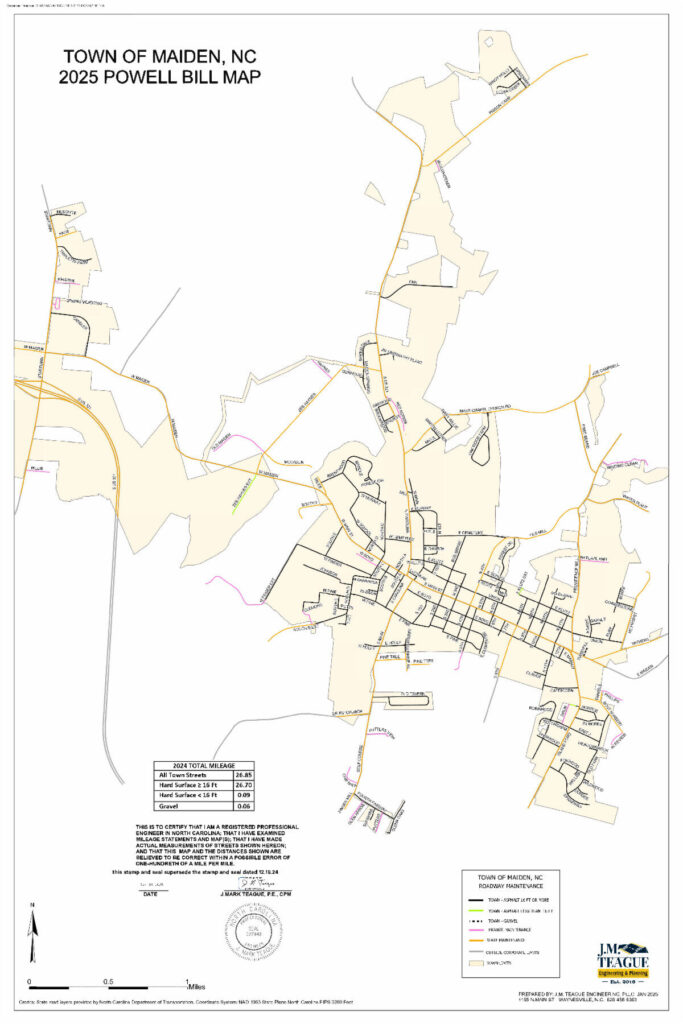
JMTE is grateful for the opportunity to serve the Town of Maiden as a trusted advisor and resource. We look forward to continuing our partnership and contributing to the Town’s success in the years to come.
Saint Patrick: The Patron Saint of Engineers
The Purpose and Importance of Powell Bill Maps in North Carolina
For over seventy years the State of North Carolina has been committed to improving local transportation infrastructure. The Powell Bill Program is one of the tools that supports this effort. This program provides funding to municipalities to build and maintain local streets and sidewalks. At the heart of this program are Powell Bill maps. The maps play a critical role in determining how funds are allocated to cities and towns.
What is the Powell Bill?
The General Assembly enacted the Powell Bill, officially known as the Municipal Street Aid Act, in 1951. The bill was named after Harley E. Powell, a legislator who helped to create the initiative. Its goal is to provide financial support to municipalities for the construction and maintenance of local streets that are not part of the state highway system. Each year, the North Carolina Department of Transportation (NCDOT) distributes millions of dollars to eligible cities and towns based on Powell Bill criteria.
The Powell Bill program is funded from North Carolina’s gas tax revenue and is distributed twice a year to qualifying municipalities. The money helps maintain streets, sidewalks, bike paths, and other infrastructure that improve the safety and quality of life for residents. The Powell Bill allows municipalities to take care of local streets while the state manages highways.
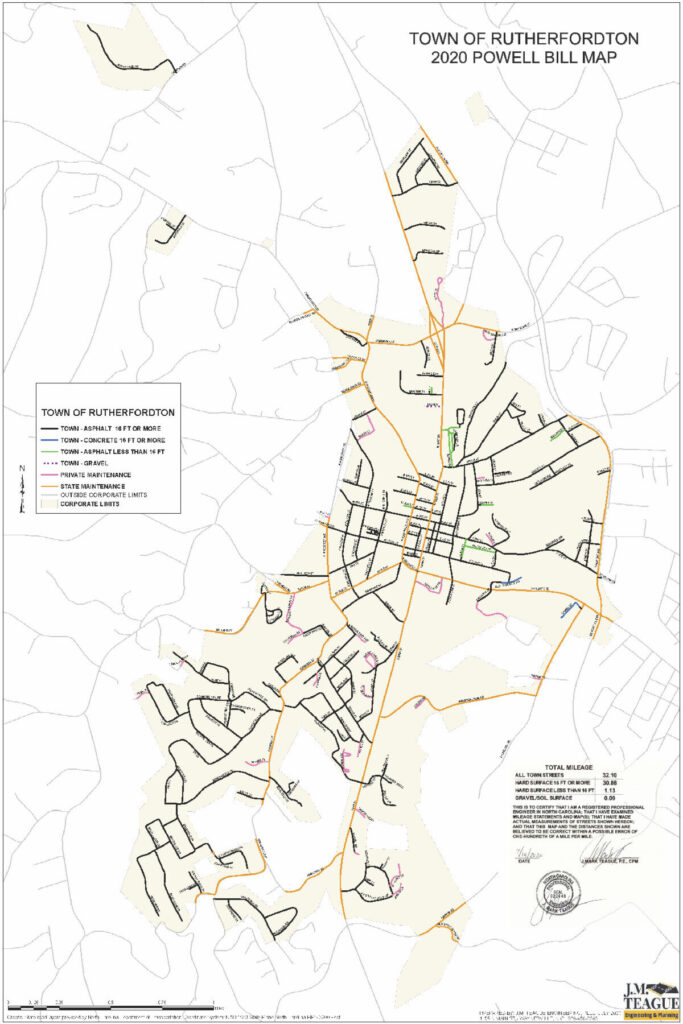
The Role of Powell Bill Maps
Powell Bill maps are crucial for determining how much funding a municipality receives. Every city or town that wishes to participate in the Powell Bill Program must submit a detailed map of its local streets. These maps must be updated each year to reflect changes such as new streets, annexations, abandonments, or improvements to existing roads.
A Powell Bill map presents all the public streets within a municipality. The NCDOT uses these maps to calculate the total mileage of streets eligible for Powell Bill funding. The more miles of streets a municipality has, the more funding it is likely to receive.
The NCDOT allocates Powell Bill funds based on the population of the municipality and the total mileage of its public streets. This is why it is so important for municipalities to keep their Powell Bill maps up to date. Accurate maps ensure that a city or town receives the correct amount of funding based on its current street network.
Powell Bill Maps are Used to:
1. Ensure Fair Distribution of Funds,
2. Support Infrastructure Development and Maintenance,
3. Assist with Long-Term Planning,
4. Encourage Accountability,
5. Facilitate Cooperation Between State and Local Governments, and
6. Enhance Public Safety.
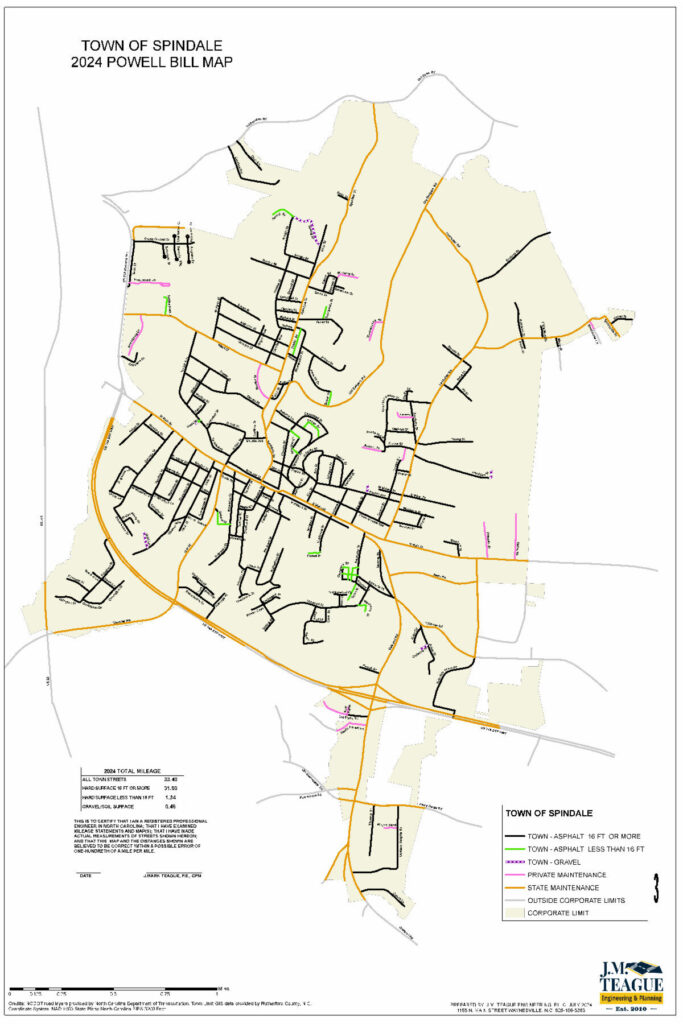
Conclusion
Powell Bill maps are an essential tool for maintaining and improving local transportation infrastructure in North Carolina. By providing an accurate representation of a municipality’s street network, these maps ensure the fair distribution of Powell Bill funds and support the ongoing development of safe and reliable streets. Without accurate Powell Bill maps, municipalities would struggle to secure the funding necessary to keep their roads in good condition, which could affect public safety, economic development, and quality of life.
As North Carolina continues to grow and change, the Powell Bill Program and the maps that support it will remain critical to ensuring that the state’s local streets are well maintained and able to meet the needs of all residents.
JMTE provides Engineering and Mapping expertise to Municipalities for yearly Powell Bill allocation submissions. Our services include updating and verifying eligible roads for Powell Bill funding; assessment and inventory of road names, lengths and widths; and the creation of an updated and sealed Powell Bill map with street listings and a certified statement. If you would like help with this service, call us at 828-456-8383.
Pavement Condition Surveys: A Smart Way to Keep Roads Safe and Costs Low
Roads are an important part of everyday life. They connect us to work, school, leisure activities, and allow emergency services to reach people in need. As roads age, they develop cracks, potholes, and other damage that can make driving dangerous and costly. Repairing or replacing roads is expensive, but there is a way to manage road maintenance more effectively. Towns, cities, and homeowners associations (HOAs) can use pavement condition surveys to monitor their roads and make smart decisions about repairs and maintenance.
This article explains what a pavement condition survey is, how it works, and how it helps keep roads in good condition while managing costs.
What is a Pavement Condition Survey?
A Pavement Condition Survey is a process that involves inspecting roads to assess their condition. These surveys help identify types of damage such as cracks, potholes, and uneven surfaces. Survey results allow engineers and maintenance crews to prioritize repairs.
During a survey, professionals look at various aspects of the pavement, such as:
1. Surface condition: Are there cracks, holes, or other visible damage?
2. Smoothness: Is the road surface even, or does it feel bumpy when driving?
3. Drainage: Does water collect on the road after rain, or does it drain properly?
4. Skid resistance: Does the road provide enough traction to keep cars from skidding in wet weather?
Survey teams use different methods to gather this information. Some teams rely on visual inspections, where they walk or drive along the road and take notes. Other teams use advanced tools, such as cameras and sensors mounted on vehicles, to gather data quickly and accurately. Regardless of the method, the goal is to collect enough information to evaluate the road’s condition and determine how much longer it will last without repairs.
How Pavement Condition Surveys Help Improve Roads
One of the biggest challenges towns, cities, and HOAs face is managing road maintenance with limited budgets. Many municipalities do not have the funds to repair every road at the same time, so they must prioritize which roads to fix first. Pavement condition surveys provide valuable data that helps officials make these decisions in a more informed way.
The benefits of pavement condition surveys are:
1. Roads in the worst condition can be repaired first, while roads in good condition can be maintained with less costly treatments. This helps avoid wasting money on unnecessary repairs and ensures that dangerous roads are fixed before accidents happen.
2. By identifying small problems early, such as minor cracks, towns and cities can perform preventive maintenance that extends the life of a road. Small repairs are much cheaper than waiting for the road to deteriorate to the point where it needs to be resurfaced or rebuilt.
3. Proactive maintenance is less expensive than reactive repairs. A pavement condition survey can reveal issues that are not immediately visible but could become bigger problems if left unaddressed. Fixing these issues early can save significant amounts of money.
4. Well-maintained roads are safer for drivers, cyclists, and pedestrians. A pavement condition survey helps identify hazardous conditions, such as potholes and uneven surfaces, which could cause accidents. By addressing these problems promptly, towns and HOAs can reduce the risk of crashes and injuries.
Pavement Damages and Fixes
Different types of pavement damage require different maintenance solutions. Here are some examples of common pavement problems and how they can be fixed:
1. Cracks can develop in pavement due to weather changes, heavy traffic, or poor construction. If caught early, cracks can be sealed with a filler material to prevent water from seeping into the road and causing further damage. This inexpensive fix extends the pavement life.
2. Potholes form when water gets into cracks in the pavement, freezes, and then expands. As vehicles drive over these weakened areas, the pavement breaks apart. Potholes can be filled with asphalt, or the damaged area can be cut out and replaced with new pavement, which provides a more permanent solution.
3. Rutting occurs when the surface of the road wears down due to repeated traffic, especially from heavy vehicles. Rutting creates grooves in the road that make driving difficult. A common solution is to resurface the road with a new layer of asphalt.
4. Raveling happens when the top layer of pavement begins to break apart, creating loose gravel on the road. This can be dangerous because it reduces traction and makes the road slippery. The most effective solution is to apply a new seal coat or resurface the road.
Cost Control
Road maintenance is expensive, but pavement condition surveys can help keep costs manageable by allowing towns and HOAs to plan their work. Instead of waiting until a road is in such bad shape that it requires costly repairs, these surveys allow for timely interventions that save money. In addition, a well-maintained road lasts longer, reducing the frequency of major repairs.
One way to further control costs is through pavement management systems (PMS). A PMS is a computer-based tool that tracks pavement conditions and helps officials plan maintenance activities. By using a PMS, towns and cities can optimize their road maintenance strategies, ensuring that they are getting the most value from their budgets.
HOAs and Road Maintenance
For homeowners associations, road maintenance can be particularly challenging because many HOAs have small budgets compared to towns and cities. However, pavement condition surveys are important for HOAs because they help ensure that neighborhood roads are kept in good condition without draining the HOA’s resources.
HOAs can hire professional survey teams to assess their roads or, in some cases, partner with local governments to conduct surveys. By using the data from these surveys, HOAs can prioritize repairs and maintenance in a way that keeps roads safe while controlling costs.
Conclusion
Pavement condition surveys are an essential tool for towns, cities, and homeowners associations that want to keep their roads in good condition while managing costs. These surveys provide valuable data that can be used to prioritize repairs, extend the life of roads, reduce long-term costs, and improve safety. By investing in regular pavement condition surveys, municipalities and HOAs can make smart decisions that benefit their communities for years to come.
One of the services J.M. Teague Engineering & Planning offers is Pavement Condition Surveys for municipalities and HOAs. If you would like a pavement condition survey, call us at 828-456-8383.
INSTRUCTOR • Mark Blanton Work Zone Safety Specialist
REGISTER: MARK.BLANTON@JMTEAGUEENGINEERING.COM
OR CALL 919-413-4004
